Today is Chinese New Year, a day of celebration as we begin the “Year of the Snake” (which sounds inauspicious). Here in Boston, we prepared for the new year with a blizzard that left about 20 inches of snow. Here’s our car:
[1] Upcoming Events: We’ve scheduled two exciting events:
- On Saturday March 9, Shou-Ching and I will be visiting downtown Philadelphia to give an afternoon of talks, discussion, and book signings at Relentless Fitness. Talks are free and open to the public, but space is limited, so if you’d like to attend sign up online. Many thanks to Grace Rollins of Bridge Acupuncture and Roger Dickerman of Relentless Fitness for organizing the event.
- On Tuesday March 5, Paul will do an “Ask Me Anything” on Reddit. Our thanks to Sol Orwell who organized it.
[2] Book News: Two bits of good news:
- PHD Audiobook: Audiobooks start shipping March 25. You can pre-order here.
- Kindle footnotes fix: Early buyers of the Kindle edition – those who pre-ordered or purchased on the first three days post-release – got a file in which links to the notes were faulty. The file was fixed on December 13, but for some reason the update didn’t get disseminated properly. If your Kindle version still has the erroneous links, you can update the Kindle file at “Manage Your Kindle.”
[3] Music to Read By: Patsy Cline is “Crazy”
Speaking of Crazy, I’d like to know how the Wilson sisters persuaded Luke Skywalker to play guitar for Heart:
[4] Interesting Items This Week:
The Sydney Diet Heart Study, which we discussed on page 121 of the book, has been re-analyzed based on newly recovered data. Omega-6 fats are still bad. Those who replaced animal fats with safflower oil were nearly twice as likely to die.
Most food-borne illnesses are caused by plant foods, and green leafy vegetables are the worst offenders.
Xanthan gum can be lethal to infants.
Emily Deans discusses Paleo orthorexia. Meanwhile, Dave Asprey may be pioneering a new disorder: “orthoQSia.”
Cate Shanahan is advising the Los Angeles Lakers and has inspired Kobe Bryant to eat from pastured animals.
Prof Dr Andro suggests drinking coffee with your beef.
Seth Roberts comments on a New York Times magazine story chronicling how a boy with juvenile arthritis was cured by dietary changes that remodeled his gut flora.
Peter Frost reports that boys and girls were reaching sexual maturity around age 17 in the 18th and early 19th centuries, but at ages 10 to 13 today. The progression to earlier female menarche and male voice-breaking has been steady since at least 1840, but the cause is unknown.
Beth Mazur offers a surprising candidate for “one of the biggest public health failures in the last couple of decades.”
Steven Hamley argues against the Carnivore Connection Hypothesis.
Finally, a ketogenic diet can reverse the kidney damage induced by the hyperglycemia of diabetes:
Of course, having found a successful dietary therapy, they don’t want to put people on the curative diet, they want to find a drug that replicates the diet’s effects!
[5] A few reader stories:
Catherine reports success with our circadian rhythm strategies:
I am committed [to learning how to make bone broth] because everything else about PHD has worked great for me. The early a.m. light exercise was the ticket for my borderline low thyroid and energy levels.
Greg Lutz in an Amazon review says he’s losing weight without appetite:
I have been eating according to the book for about a month now and I am certainly losing weight. I don’t believe in weighing myself, but I have lost over an inch in my waist in this short time. I have no desire to snack or eat anything sweet.
Joyjoy at Low-Carb Friends has had an interesting experience:
I keep forgetting to mention that part of the reason I love the PHD approach, or at least the wheat-free, grain-free, sugar-free part, is that I hurt way less doing it. I’m bizarrely healthy overall, but I did have wicked migraines that were spiralling a wee bit out of my control during menopause. They seem much improved. And I can easily do days of snowshoeing, skiing, etc.- stuff I haven’t done for years – and not hurt. I’m sure the anti-inflammatory effects of this diet are the reason. (One of the reasons I’m certain is that when I do eat sugar/flour, I ache post-sports.) Fascinating. And so encouraging.
[6] Cute Animals:
(Source)
[7] The Ideal Weight Program from Dan’s Plan and Stephan Guyenet: Dan’s Plan and Stephan Guyenet recently announced their “Ideal Weight Program”. For $39.99, you get an assortment of content and online tools guiding you through an eating and lifestyle program that promotes weight normalization.
Disclosure: I am an advisor to Dan’s Plan. Dan’s Plan and I considered developing a parallel program to Stephan’s, which would have been released simultaneously and called the Complete Health Program. However, as time is scarce and Shou-Ching and I wanted to focus on our cookbook, we put off the project.
An attractive part of the program is the quality of the people behind it:
- Stephan is a neurobiologist and obesity researcher whose Whole Health Source blog has been one of the best on the Internet for as long as I have been reading diet and health blogs.
- Dan Pardi, the leader of Dan’s Plan, is a Ph.D. candidate in neurobiology at the University of Leiden who specializes in sleep, exercise, and circadian rhythms.
Both are top-notch scholars; and both are highly motivated to help others improve their health. Dan, for example, was moved to start Dan’s Plan after his father died too young, in part because he could not motivate himself to adopt a healthy lifestyle.
A premise of Dan’s Plan is that an online support program which draws data from Quantified Self tools, such as a FitBit or Withings scale, can help motivate users to adhere to a health-improving program.
Dan and Stephan make a great team because circadian rhythms are as important as food in obesity, so Dan’s expertise complements Stephan’s. You can be confident their advice is solidly grounded in science.
You can read Stephan’s description of the Ideal Weight Program here. Diet-wise the program offers two choices:
- A version of a protein-sparing modified fast, similar to the Dukan Diet or Atkins Induction, which Stephan has given the catchy acronym of the FLASH (Fat Loss and Sustainable Health) diet.
- A “Simple Food Diet” based on whole, natural foods that incorporates many of the themes of Stephan’s blogging.
If you feel an online program based on Stephan’s ideas can help you, I encourage you to check out the Ideal Weight Program.
[8] Faces Therapy: (Background on faces therapy here):
Via Orrin Judd.
[9] Some AHS videos: Videos of talks from the 2012 Ancestral Health Symposium are still being released. This week saw a couple of good ones. Hamilton Stapell looks at the origins of today’s ancestral health movement in the Physical Culture movement of the late 1800s:
And Mat Lalonde spoke on nutrient density – I thought this was one of the better talks at the symposium:
Mat and I will both be serving on a panel discussion of nutrient density at PaleoFX, which looks to be a terrific meeting.
[10] Shou-Ching’s Photo Art:
[11] Slim is Simple: Jonathan Bailor is an author and Microsoft producer who is creating professionally produced multimedia videos to promulgate the low-carb Paleo message. The video production values are really impressive; the message is intended to offer a common-denominator viewpoint that Jonathan thinks most of the Paleo community can endorse. He advocates water, fiber, and protein rich foods like meat and vegetables, and singles out starches – especially, RICE (7:50) – for opprobrium. As an explanation for obesity, he offers the “clogged drain theory of obesity.” There are a mix of things I agree with (we should shop for whole foods from the perimeter of the supermarket) and things I disagree with (we should favor “inefficient” calories that our body resists utilizing). I think the title thesis – that slim is simple – has something to it, because living our ancestral lifestyle will usually normalize weight; but I don’t think it’s a simple matter to live our ancestral lifestyle in the modern world. It doesn’t follow that because slim was simple in the past, it is simple today.
I’m pleased that Jonathan lists perfecthealthdiet.com as a resource at the end of the video. He hopes his video will get to a million views on Youtube, and I hope he gets there. Check it out!










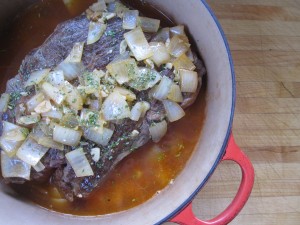
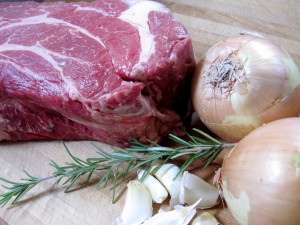
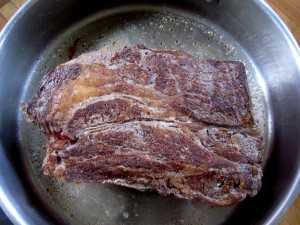
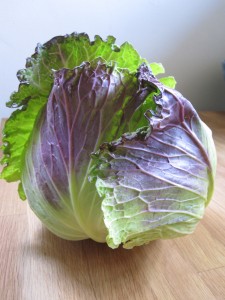
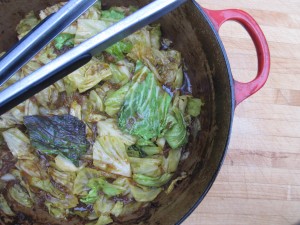

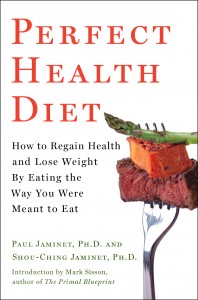

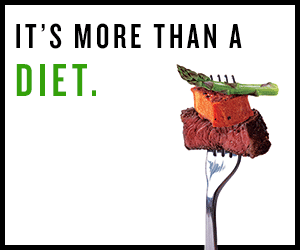
Recent Comments